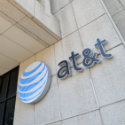AT&T plans to shutter its 3G network in the early part of 2022. But the company, and some top analysts, don't expect the action to affect many of the 40.5 million cars connected to AT&T.AT&T plans to shutter its 3G network in the early part of 2022. But the company, and some top analysts, don't expect the action to affect many of the 40.5 million cars connected to AT&T.

AT&T is planning to turn off its 3G network in the early part of 2022. However, the company said that the action won't unduly affect its connected car business.
"AT&T supports various innovative technologies supporting network communications for a variety of connected devices, including many connected cars on the road today," Robert Boyanovsky, vice president of the Internet of Things and Mobility operation at AT&T Business, said in response to questions from Light Reading. (Boyanovsky takes the place of Chris Penrose, who represented the operator's IoT business for several years.) "We have more than 40.5 million connected cars on the AT&T network, as of the third quarter of 2020, and have relationships with 31 top global brands. Most of these vehicles are connected through 4G LTE, primarily supporting a wide variety of automotive telematics services. We will continue to work with our impacted customers as we navigate through this 3G network transition."
Some top analysts in the space largely agreed with Boyanovsky's assessment. For example, Chetan Sharma of Chetan Sharma Consulting said AT&T's 3G shutdown will have a "very minimal" impact to its connected cars business overall because it already operated a 4G network in 2013, when its connected car business got off the ground. He added that 3G in general was a very short cycle between 2G and 4G.
"Having said that, OEMs [original equipment manufacturers] do plan out the vehicle 3-5 years in advance, but that covers the window of some 4G modules being available," Sharma wrote in response to questions from Light Reading. "The connected car volume really started growing in 2015 and by then, there were plenty of modules available. So, cycling 3G out of the ecosystem is not a tall order compared to 2G."
The issue is an important one for AT&T. For example, in the operator's most recent quarterly report with the Securities and Exchange Commission, AT&T said it added fully 3 million wholesale connected cars during the period. "We believe that these connected car agreements give us the opportunity to create future retail relationships with the car owners," AT&T wrote.
Nonetheless, some vendors are seeing opportunities.
"Mojio offers a clear solution to the 3G shutdown problem, and more broadly across the entire fleet of unconnected models," wrote Kyle MacDonald, VP of marketing and business development at Mojio. The company powers T-Mobile's SyncUP DRIVE offering, which plugs into a car's OBD-II port to provide connected car services across most auto makes and models, for $10 a month. "That's an attractive proposition to a customer that's just been informed that the connected car features will soon be shut down."
For its part, AT&T does have experience in shutting down networks and shifting customers onto new technologies. For example, AT&T discontinued service on its 2G network in 2017.
According to AT&T's filings with the SEC around that time, it counted 4 million customers on its 2G network, the bulk of which were IoT devices.
Although AT&T typically announces such events years in advance, it apparently can still take some customers by surprise. For example, according to IoT technology vendor Sierra Wireless, around 70% of San Francisco's buses and trains disappeared from its real-time maps due to the 2G shutdown. "The San Francisco Municipal Transportation Agency (SFTMA) then faced weeks of mounting public pressure while it scrambled to upgrade its legacy monitoring devices," Sierra Wireless wrote.
"As disruptive as the current redesign may seem, failing to design long-term for the future can result in an even more complex and costly project down the road as network capabilities continue to change and technology evolution naturally occurs," wrote Sierra Wireless in October.
Indeed, AT&T isn't the only operator shifting away from older technologies in order to deploy more efficient network services. Verizon plans to shut down its own 3G network by the end of this year – a year later than initially planned – while T-Mobile has said it will shutter its own 3G network "over the next several years."
Related posts:
— Mike Dano, Editorial Director, 5G & Mobile Strategies, Light Reading | @mikeddano
About the Author(s)
You May Also Like











